We were lucky to be among the first few from India to get astride the recently launched Ducati DesertX in Italy. Here is our first impression
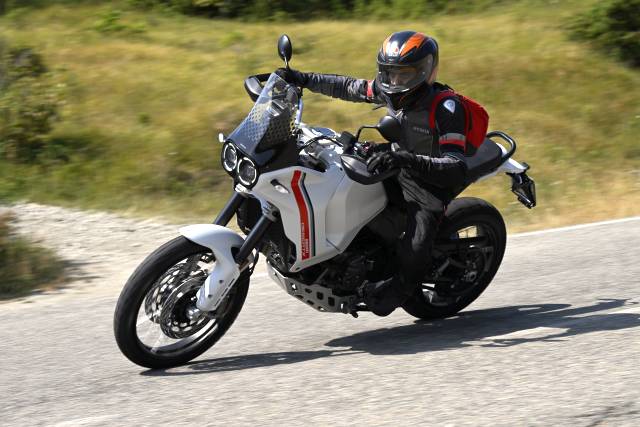
Story: Azaman Chothia
Photography: Ducati
We first saw the Ducati DesertX make its début as a concept at the EICMA 2019. It was one of the most unique and attractive-looking ADVs there, which made it a big hype. While the design remained identical to the concept model, Ducati decided to make use of their more popular 937-cc twin-cylinder motor in the production version compared to the 803-cc, twin-cylinder, air-cooled motor from the Scrambler that it was earlier showcased with. For this ride, we started from the Ducati factory in Borgo Panigale and rode all the way up through some fantastic twisty roads to arrive at the Raticosa Pass.
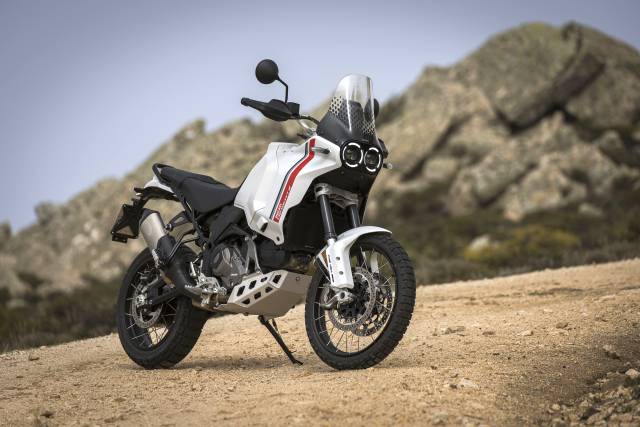
This is one of the first modern-day Ducatis to sport a 21-inch wheel at the front and an 18-inch one at the rear. The design language is reminiscent of Dakar bikes of the 1980s and ’90s, closest to the Cagiva Elefant 900. And to stay in tune with the theme of the past, the bike is currently only being sold in white. The bike sports some Ducati and DesertX branding with a red strip across the sides of the large 21-litre fuel-tank. At the front, it gets a set of round LED daytime running lights (DRL) that are covered by a large Dakar-style fairing and the bike becomes slim as it flows towards the rear with split seats and an upswept exhaust unit on the side. I really like their modern take on this vintage Dakar-inspired design and most Ducatisti at the WDW 2022 seemed to love it too.
At 875 millimetres, the seat is quite tall for riders of a short stature but the unit that we will be getting in India will come with a seat height of 865 mm. To get it even lower, there is a kit that has a shorter seat and the suspension is lowered to bring the saddle height to 845 mm. The riding position is like you would expect from an ADV; upright and comfortable with a wide handlebar and a slim seat that allows a rider to move around easily.
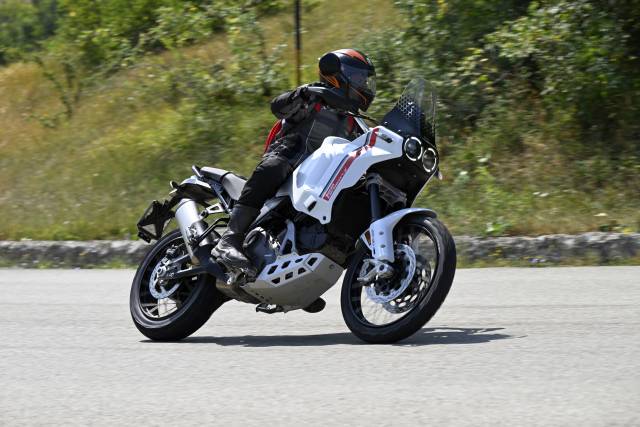
The familiar 937-cc, twin-cylinder, Desmodromic Testastretta 11° motor puts out 110 hp at 9,250 rpm and a peak torque of 92 Nm at 6,500 rpm in this application and there are a few changes to the gearing and tuning to make the motorcycle better suited to hardcore off-road use. We, however, rode this motorcycle through the twisties on well-paved roads and spent most of our time in Touring mode, so its off-road capabilities would have to wait for another day. On the road, the first thing I felt after riding for a few kilometres was how light and how effortless the bike was despite its kerb weight of 223 kilograms. The gear ratios have been retuned where the first and second gears have been shortened by 14.3 percent and 8.7 percent respectively as compared to the Multistrada V2. This bike also makes use of a larger 49-tooth sprocket at the rear. The engine feels calmer as compared to the other models and the power delivery is smoother and easy-going all the way to 6,000 rpm, after which a surge in power arises. The quickshifter is slick and the engine feels more tractable. It could easily handle a speed of 70 km/h in sixth gear. The tuning of the motor in the DesertX along with crisp throttle response and good fuelling make it engaging to ride and this should make it unintimidating for a new rider.
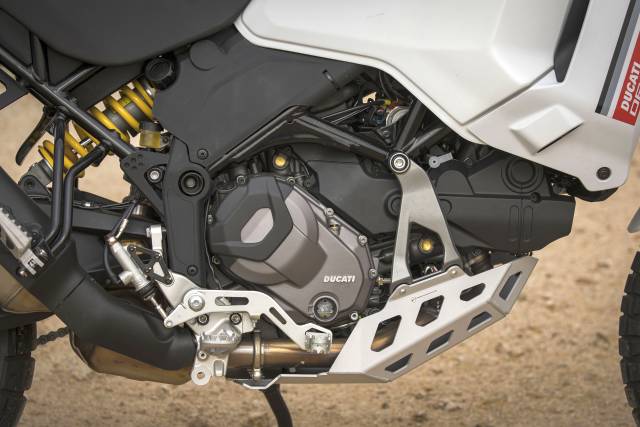
The DesertX uses a new tubular steel trellis frame that has been specially developed for off-road riding and sports an aluminium double-sided swing-arm. Suspension duties are handled by fully adjustable KYB forks at the front and a KYB monoshock at the rear with 230 mm and 220 mm of travel respectively. The bike handles well through corners and can be flicked around easily while feeling really stable and planted. Like all Ducatis, it is confidence-inspiring and the electronics package always had my back. The DesertX has six ride modes (Sport, Touring Urban, Wet, Enduro, and Rally), four power modes, and all of the additional electronic controls which can be customized according to the rider’s preference.
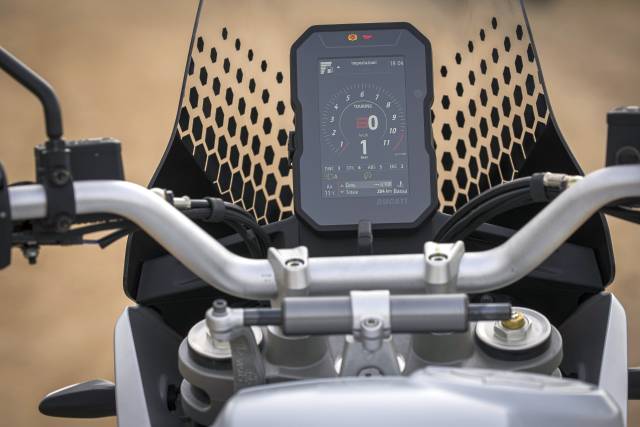
The braking set-up includes twin 320-mm discs at the front with radially mounted Brembo M50 calipers and a 265-mm disc at the rear gripped by a Brembo caliper. These brakes are sharp to get the bike to a stop and, with the aid of cornering ABS, make it much safer too. When the bike is put in Rally or Enduro mode, the ABS can be switched off completely at both ends which makes this an interesting proposition for the more experienced riders. Enhancing the stability and grip levels of this bike are a set of Pirelli Scorpion Rally STR tyres.
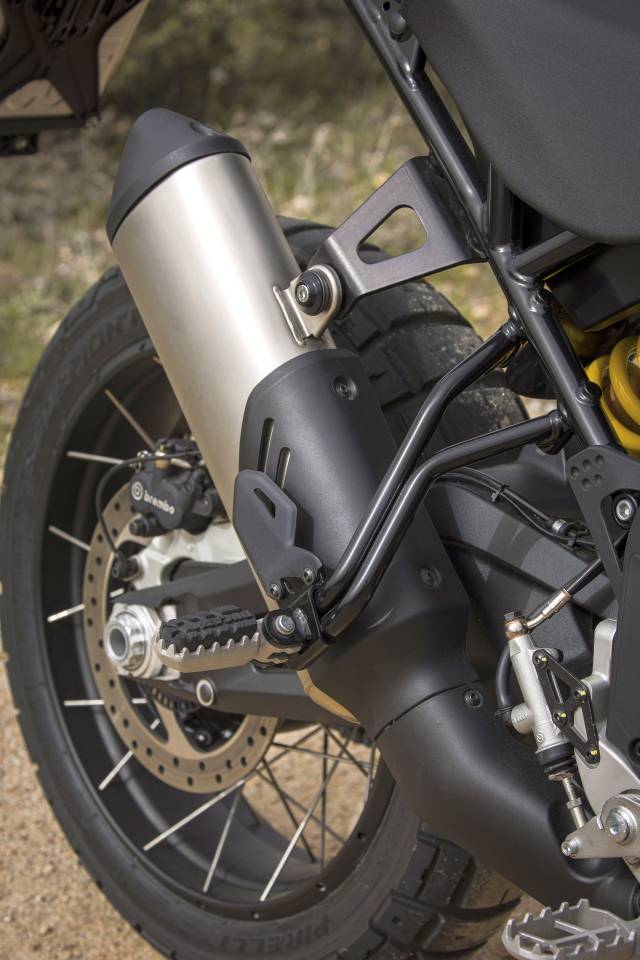
The layout of the new five-inch TFT dash is engaging and displays all the information pretty well. There is a separate layout one can switch to and it is dedicated to off-road use. Turn-by-turn navigation is also incorporated into this unit and can be bought for an extra cost. Among all the accessories that can be bought separately, the auxiliary tank that fits at the rear is a well-thought-out addition. It can carry an extra eight litres of fuel and riders will simply get a message on the TFT to transfer fuel once the main tank goes into reserve.
Overall, I was quite impressed by this motorcycle after this short ride. Its rugged nature would make it a superb tool to tackle our Indian road conditions. With the pleasant nature of its engine tune, plush ride quality, and great looks, the DesertX is surely an interesting proposition. Internationally, the price is on par with the Multistrada V2 S, so we may expect it to be launched in India for approximately Rs 17 lakh (ex-showroom). We still hope that it gets priced a little more competitively which will help it take on the competition.
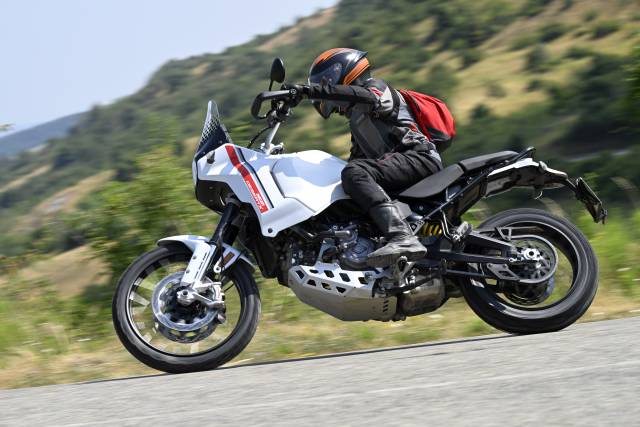
We look forward to the motorcycle’s launch in India and can’t wait to properly explore its off-road capabilities, so that we may give you more insights into what this beast is mainly built for. Also, special thanks to Ducati India for inviting us to the birthplace of the brand where we got to live those crazy experiences.


Leave a Reply